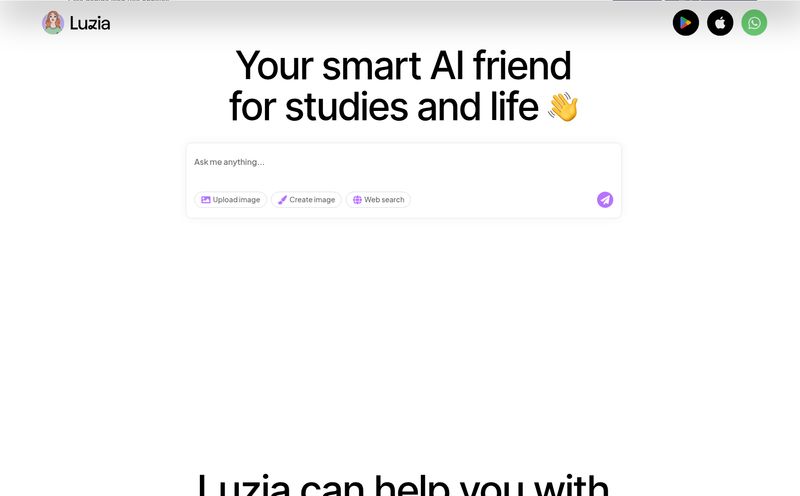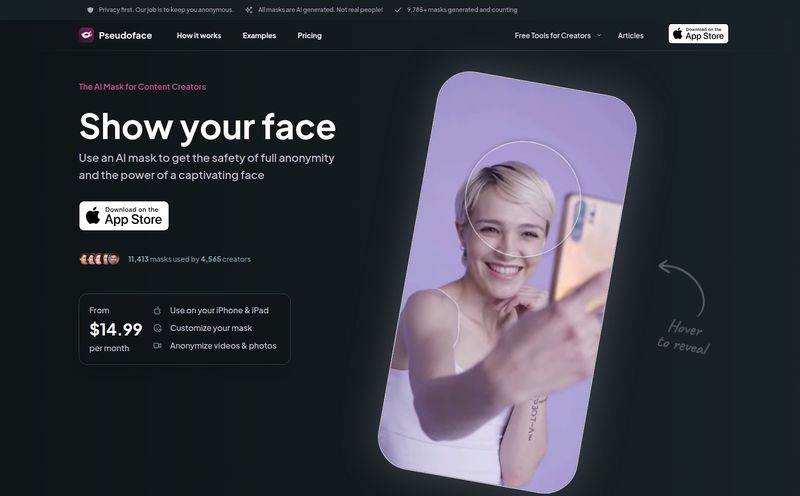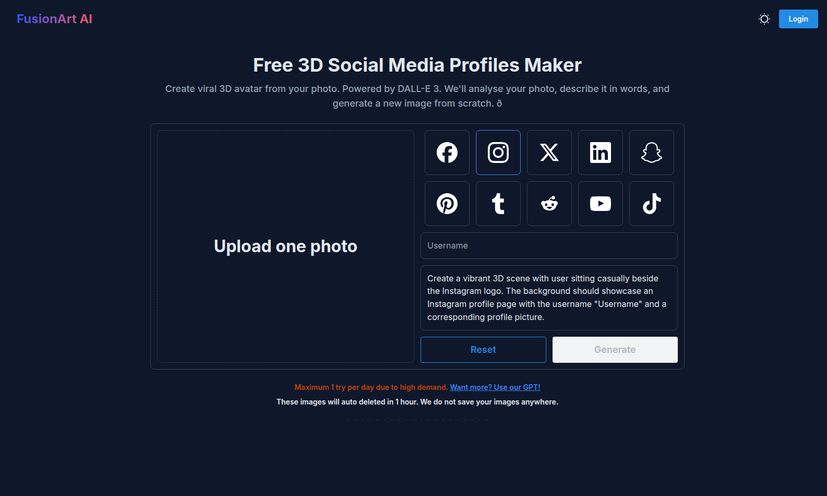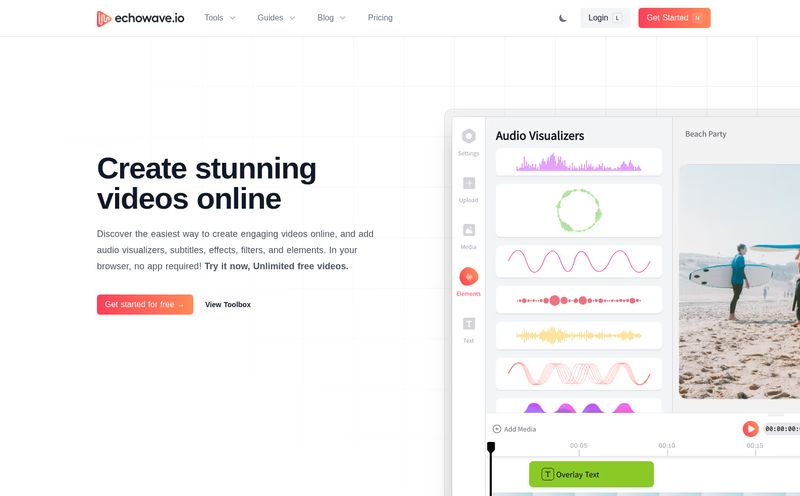I’ve been in the digital marketing and traffic generation world for what feels like an eternity. And if there’s one constant, it’s the tightrope walk between data and privacy. We want to understand user behavior, analyze foot traffic, and improve customer experience using video. But we also want to respect people's privacy and, frankly, not get hit with a soul-crushing GDPR fine. It’s a paradox that keeps alot of us up at night.
For years, the solution has been... clumsy. We’d blur faces, slap black boxes over them, or pixelate them into oblivion. It worked, I guess. But it was like trying to read a classic novel where every third page is ripped out. You lose all the important stuff: emotion, head movement, demographic hints. All the valuable analytical metrics just poof, gone.
Then I stumbled upon a company called Syntonym, and it felt like one of those rare moments where someone didn't just put a patch on a problem, they rethought the entire approach. They're using generative AI to do something much, much smarter.
What on Earth is Syntonym? The 30,000-Foot View
So what is this thing? In the simplest terms, Syntonym is a privacy protection technology. But instead of just hiding faces, it replaces them in real-time with completely new, hyper-realistic synthetic faces. These new faces have never belonged to a real person. They are generated by an AI, but—and this is the kicker—they preserve the original person's expressions, movements, and other key analytical data.
Think of it like a digital witness protection program. The original identity is completely gone, untraceable. But the person's behavior remains intact for analysis. It’s the difference between a sledgehammer (blurring) and a surgeon’s scalpel. It removes only the personally identifiable biometric data, leaving everything else you need.
The Endless Tug-of-War: Data Analytics vs. User Privacy
Let's be real. The need for this is huge. Every retail store with a security camera, every smart city project analyzing traffic flow, every company that uses video for training AI models is sitting on a privacy landmine. Regulations like GDPR in Europe and CCPA in California aren’t just suggestions; they have teeth, and the fines can be astronomical.
This has created a massive chilling effect on innovation. Many companies are simply too scared to use their video data, leaving valuable insights locked away. Syntonym's whole proposition is to give you a key to that data without breaking the privacy lock. By swapping out the biometric data at the point of capture, the data is anonymized from the get-go. No real faces are ever stored, so compliance becomes drastically simpler. You can finally turn that mountain of real-world video into usable training data or analytical reports without treating every frame like a legal liability.
How Syntonym Actually Works (Without the Geek Speak)
Okay, so how does the magic happen? From what I can gather, it boils down to a couple of core concepts that make it stand out.
It's Not a Mask, It's a New Face
This isn't a deepfake in the way you see in memes. It's not plastering someone else's face over the original. The AI generates a unique, non-existent face that mimics the original's features and expressions. This is crucial. It means you can't reverse-engineer it to find the original person. The biometric link is permanently severed.
Real-time, Lossless Anonymization
One of the most impressive claims is that it works in real-time. For live-streaming, video calls, or immediate security feedback, this is a must. It processes video on the fly, whether it's on a mobile device, a local server, or in the cloud. They call it "lossless" anonymization, which is a fantastic bit of marketing speak that’s actually true. You lose the identity, but you don't lose the data. You can still tell if a customer is happy, confused, or looking at a specific product.
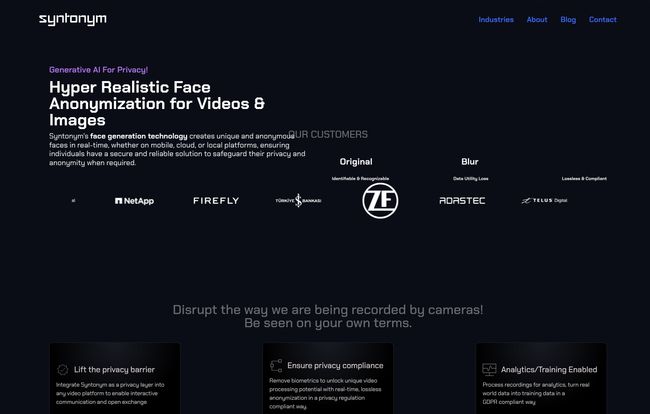
Visit Syntonym
The Good, The Bad, and The Techy
No tool is perfect, and as a professional, I always look for the trade-offs. It's easy to get swept up in the cool tech, but we have to be practical.
On the plus side, the benefits are clear. You get rock-solid privacy compliance, you can unlock analytics you were previously too scared to touch, and you build trust with users by showing them you take their privacy seriously. Their website even mentions a "Synthetic Face Indicator" to maintain transparency, which I think is a brilliant touch. It’s about being private, not deceptive.
Now, for the practical considerations. Integrating this into an existing, complex video infrastructure will take some work. This is not a simple API key you just drop in and forget about. It's a foundational privacy layer, so expect some development and integration effort. Also, real-time generative AI requires computational power. While they offer solutions for different hardware (from mobile chips to powerful cloud servers), there's going to be some overhead. You need to ensure your system can handle it without introducing lag, especially for real-time applications.
Where Can You Actually Use This Stuff?
Syntonym seems to understand that one size doesn't fit all. They offer a few different deployment models, which makes it pretty flexible.
Syntonym Cloud & On-Premise
This is the workhorse solution for businesses. You can process high volumes of video data, either by sending it to their cloud or by keeping everything in-house on your own servers (on-premise). The on-premise option is huge for sectors like healthcare or finance where data residency is non-negotiable.
The Syntonym Virtual Camera
This one's really interesting. It acts as a virtual webcam for your desktop. You can use it for video conferencing or streaming, and it anonymizes your face on the fly before the video even gets to Zoom, Teams, or OBS. For remote work or content creators who want to maintain their anonymity, this is a very cool application.
They also offer a Mobile SDK, so app developers can build this functionality directly into their applications. Think social media apps with a "privacy mode" or citizen journalism platforms where sources need protection.
So, How Much Does Syntonym Cost?
Ah, the million-dollar question. As of writing this, there's no public pricing page. This is pretty standard for enterprise-grade B2B tools like this. The cost is likely going to depend heavily on your use case: the volume of video, the deployment model (cloud vs. on-prem), and the level of support you need. Your best bet is to reach out to their team for a custom quote based on your specific project. Don't expect a simple three-tiered monthly subscription plan here.
My Final Take: Is Syntonym a Game-Changer?
I believe so. For too long, we've accepted a false choice: either you get detailed analytics, or you get privacy. Not both. Tools like Syntonym are challenging that. By fundamentally changing how we anonymize data, they're allowing businesses to be both data-driven and ethical.
Is it a silver bullet for every privacy problem? Of course not. But for anyone working with video data—from marketers and data scientists to smart city planners and security firms—it represents a massive leap forward. It’s a tool that doesn’t just solve a problem; it creates new opportunities. And in this industry, that's what we're all looking for.
Frequently Asked Questions about Syntonym
1. Is Syntonym GDPR and CCPA compliant?
Yes, a core feature of Syntonym is compliance with major privacy regulations. By removing biometric data and replacing it with synthetic data, it helps companies meet their obligations under laws like GDPR and CCPA, as no personally identifiable information (PII) is stored or processed after the anonymization.
2. Does Syntonym only work on faces?
While their primary focus is face anonymization, the underlying technology can be applied to other identifiable markers. The information provided indicates they also offer solutions for anonymizing things like license plates, which is extremely useful for mobility and traffic analysis.
3. Can this be used for live video streams?
Absolutely. The technology is designed for real-time processing, with low latency. This makes it suitable for live applications such as video conferencing, live streaming events, and real-time security monitoring.
4. What is the difference between Syntonym's method and just blurring faces?
Blurring or pixelation destroys all data in that area of the image. Syntonym's generative AI method is "lossless" from an analytical perspective. It removes the identity but preserves crucial data points like facial expressions, gaze direction, and head movements, which are vital for analytics and AI model training.
5. What kind of performance can I expect?
Performance depends on the deployment. The Syntonym Virtual Camera, for example, is advertised to achieve up to 24 FPS average video generation on standard hardware like Arm, Apple Silicon, and Intel CPUs. For larger scale cloud or on-premise solutions, the performance would be scaled to match the client's needs.
Reference and Sources
- Syntonym Official Website
- Official EU GDPR Information Portal
- Gartner Hype Cycle for AI (for context on Generative AI trends)
